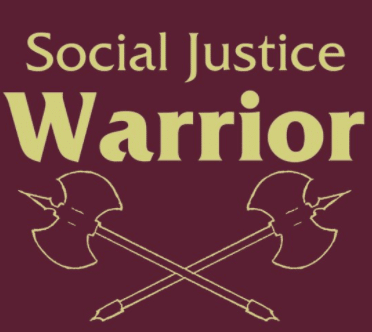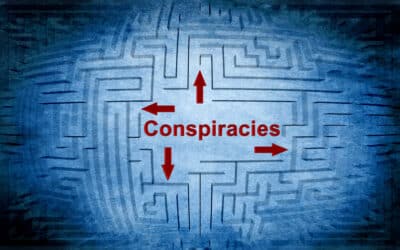A recent nightmare is still vivid in my mind: I dreamt that I had just begun a new job as a public relations executive for a big corporation and had gotten a note from the CEO that he wanted me to work with local government and nonprofit organizations to address the local homeless problem.
Knowing that the company and the other entities really didn’t want to do what was necessary to solve the problem and were just going through feel-good motions, I wanted to get out of the assignment but faced a dilemma.
On the one hand, I knew that the quickest way out of the assignment was to go public with an honest assessment of the root causes of homelessness, thus causing a public uproar and demands for my removal. On the other, such an easy escape from the assignment would be career-ending, because the CEO would conclude that I was too politically naïve to be an executive with the company.
I woke up in a cold sweat.
There was nothing Freudian about the nightmare. It simply reflected the memories of my years as a corporate executive and then as a community activist—years of having to choose between politics and principles.
The nightmare was probably triggered by today’s rampant phoniness, and, specifically, by the widespread and incessant playacting, virtue-signaling, propagandizing, and feel-good advertising by America’s major institutions, including industry, media, academia, and even charities, especially on such hot-button issues of poverty, income inequality, race, gender, and climate change.
Of course, advertising in particular is a make-believe land, a land where everyone is hip, cool, sensitive, accomplished and openminded; where all races and genders are equally represented in all professions; and where there is no racial strife, no bloodshed between Crips and Bloods, no teenagers shooting each other over being disrespected, no violence in prisons between the races, and no religious sect that has a medieval view of women and gays.
In this utopia, bearded handsome men have feminine traits, and beautiful slim women have masculine traits. Other than looks, men and women are completely interchangeable, because, as the conventional dogma goes, gender differences are a social construct, and a white patriarchal one at that.
The utopia is also where all sexual preferences, sexual orientations, and living arrangements are equally natural and good, except, strangely, polygamy, although polygamy has existed in many cultures for all of human history—and although there is de facto polygamy in poor neighborhoods (and some rich ones), where men often have children with multiple women. But it would be an egregious faux pas to mention this in sophisticated, enlightened circles.
Woe to the company that doesn’t have the right mix of races and genders in a TV commercial or the correct social or lifestyle message, preferably a message with saccharine background music and a vocalist with twangy vocal cords singing out of key, making it seem that dealing with the XYZ company is akin to dealing with Mother Teresa. The features and benefits of the product or service take a backseat to the social or lifestyle message.
Take Subaru commercials. The commercials say nothing about the price, reliability, horsepower, or gas mileage of Subaru cars. Instead, the commercials send the message that Subaru owners are kind, caring and lovers of the outdoors. This from a Japanese company that made fighter planes in World War II, including planes flown by kamikaze pilots who dove into American warships to die for the emperor.
Such advertising caters to the naivete, idealism, utopianism, and astonishing ignorance of the millennial generation and the post-millennial generation, members of which want to buy products from, and work for, companies that portray themselves as hip, “woke,” socially-responsible, diverse, and inclusive. The advertising reinforces the notion that symbolism and sensitivity alone will solve serious socioeconomic problems. All you need to do to is to socialize or work with different races of your same social class, people with the same education and interests as you, to show how much you care about social justice for the underclass, whom you never encounter.
This type of sophomoric thinking was inculcated in college, where a liberal education (in the classical sense) has given way to illiberal ideological indoctrination and political agendas. These are the same institutions of higher learning where faculty and administrators preach egalitarianism, inclusivity and social justice while engaging in pettiness, backstabbing, and cutthroat competition for tenure and for private and public research dollars and consulting gigs.
The same unprincipled and greedy staffers let universities become bloated, bureaucratic and hidebound; then, to cover the skyrocketing costs, they joined the government in the college loan scam, which hurt poor minorities the most, because a disproportionate number of them dropped out without a degree but with considerable indebtedness.
More difficult to quantify is the harm caused by college graduates who believe that they are educated—that taking a few courses on a subject has made them an expert in the subject. They certainly don’t act with the humility and wisdom of knowing how little they know and how much there is to learn, which is the mark of the truly educated.
This is especially true with social justice warriors, or fanatics, as seen in their hatred of America and capitalism, their illiberal affection for socialism and central control, their fetish for perfect fairness and equal outcomes, their desire to do away with SAT scores and other quantifiable criteria in college admissions, their campus safe zones and kangaroo courts, their ugly stereotypes of white people, their glorious stereotypes of non-whites, their religious fervor about diversity and inclusion, their willingness to subvert free speech in the interest of political correctness, and their glee in destroying those who dare to disagree with them.
They are not only sophomoric and mean-spirited but also supercilious. Wanting to remake the world in their image, using government force if necessary, they look down on those who prefer pluralism and a diversity of viewpoints, calling them racist, sexist, homophobic, privileged, closeminded, Republican, conservative, religious, born-again, nationalistic, or some other voguish pejorative. They’re like an old-fashioned talking doll, which, when a cord is pulled, repeats prerecorded words at random.
The fanatics are particularly dogmatic and sophomoric about race.
They see themselves as profound, but it is not profound to realize that African Americans got a raw deal before and after the nation’s founding and are still suffering from the aftereffects of slavery, Jim Crow, redlining, and other travesties, including such aftereffects as poverty, bad K-12 schools, crime-ridden neighborhoods, high incarceration rates, and below-average test scores. Nor is it profound to realize that as a result, blacks might see the world differently than a Brahmin whose family goes back to the Mayflower.
Likewise, it is not profound to state that some people have more than one disadvantage to overcome, whether race, gender, sexual orientation, disability, looks, or whatever makes one a minority in a given time and place. Using the fancy word “intersectionality” does not turn a banality into a profundity.
It is apparent from their canards, sophistries, clichés and platitudes about race that many social justice fanatics have studied only the first three chapters of the first volume of a twelve-volume set on the racial history of America and the world. Even at my advanced age, even with a lifetime of study, and even with having been at the leading edge of the equal opportunity and diversity movements, I’ve only made it through volume six. That makes me either half-learned or half-ignorant, but I’m too biased about myself to be objective about that.
By Volume Six, one is struck by the universality of human good and evil across all races and ethnic groups. Virtually all of today’s victim groups were, at another place and time in history, a group of victimizers. For example, of the Native-American tribes that had suffered brutalities and even genocide at the hands of the white man, many had inflicted unspeakable atrocities and butchery on their tribal enemies long before the white man arrived on the continent. If the Comanche had been the first to build sailing ships, to invent cannons and muskets, to form standing armies, and to establish a strong central government with coinage and an administrative state, does any sane person really believe that the tables wouldn’t have been turned?
This doesn’t justify what was done to Native Americans by the white man or downplay the horrible living conditions today on many Indian reservations; nor is it an excuse for not doing something to rectify the situation. But it does suggest that evil is universal and not just a white trait.
That is not a profound observation and shouldn’t be controversial, but try saying it on a college campus or Google’s campus. You’ll be called to the office of the director of diversity and inclusion, who, to justify her $250,000 salary for the next 20 years until retirement, has to keep uncovering the slightest deviations from Newspeak.
It is okay, however, to praise the 1619 project on campus. The project has the simplistic premise that when slaves were brought North America that year (after being captured and sold by Africans), everything that followed, including the founding of the United States, gave an unfair advantage and inherited privilege to white people, including whites who were indentured servants, poor whites who immigrated to the United State 275 years later to die in coal mines and factories, and working-class whites of today, who are mired in poverty, addicted to drugs, and dying prematurely from a decline in life expectancy.
Curiously, the project is silent about the fact that the Spanish Empire, a k a Hispanics, had introduced slavery to the so-called New World the century before. Using the logic of the project, then, descendants of those Hispanics have an unfair advantage and inherited privilege. But that can’t be, because Hispanics are considered a disadvantaged minority group, and much of Central and South America is impoverished.
Therein lies an opportunity for millennials and post-millennials to be profound and learned instead of sophomoric. They could study why some cultures, forms of government and economic systems are better at reducing poverty and rectifying past injustices than others, while recognizing that there is no perfect government or system, because humans aren’t perfect.
And while they’re at it, they could study the progress that African Americans had made in the first half of the twentieth century and why the progress stalled later in the century. They could determine if Daniel Patrick Moynihan was prescient in his warning that the welfare state would fracture black families and lead to social pathologies. They could test my hypothesis that much of what passes for racism today is actually prejudicial feelings about the lower social classes of all races—driven by an uncomfortableness with the self-defeating behaviors, values, mores, and dress of the underclass. And they could stop playacting about social justice and actually work at improving the lives of the lower classes, by first acknowledging such root problems as fatherless families.
If they did the foregoing, my nightmares might stop.































